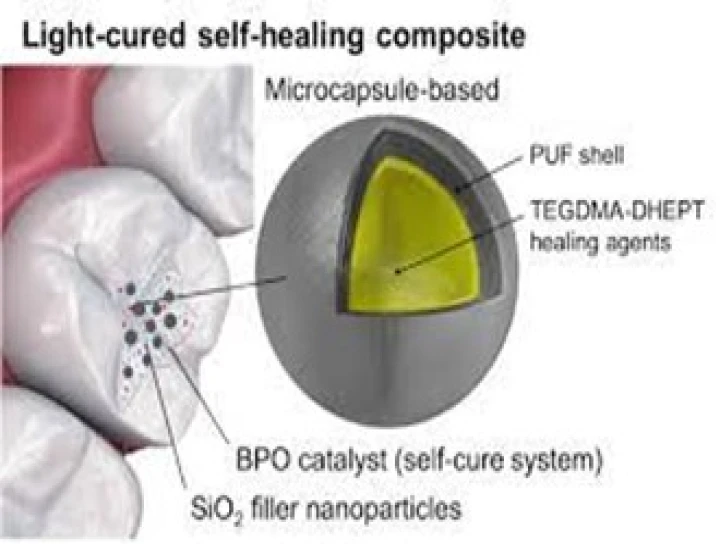
INTRODUCTION-In recent years, advancements in dental technology have paved the way for innovative solutions, and one such breakthrough is the development of self-healing composite materials. These materials represent a promising avenue in restorative dentistry, offering a unique ability to repair damage over time. Let's delve into the fascinating world of self-healing composites and their potential impact on the field of dentistry.
Ø Understanding Self-Healing Composites
Traditional dental composites are widely used for restoring decayed or damaged teeth, providing both strength and aesthetics. However, they are susceptible to wear and tear over time. Self-healing composites, on the other hand, possess an extraordinary capability – the ability to repair microcracks and damage autonomously.
Ø How Self-Healing Works
At the core of self-healing composites is a dynamic system that responds to stress or damage. These materials incorporate microcapsules or microvascular networks filled with a healing agent. When the composite experiences microcracks, these capsules rupture, releasing the healing agent to seal the damage. This process mimics the body's natural healing mechanisms, offering a promising solution to increase the longevity of dental restorations.
Ø Advantages for Patients
1. Extended Longevity: Self-healing composites have the potential to significantly prolong the lifespan of dental restorations by actively addressing and repairing microdamage.
2. Reduced Sensitivity: The sealing of microcracks can contribute to a reduction in tooth sensitivity, enhancing the overall comfort for patients.
3. Minimized Repairs: With the self-healing ability, there may be a decrease in the need for frequent repairs or replacements, leading to cost savings for both patients and practitioners
Ø Future Directions
As researchers continue to refine and develop self-healing composite materials, the future of dentistry holds exciting possibilities. The integration of nanotechnology and other cutting-edge approaches may further enhance the performance and versatility of these materials, opening new doors for innovative dental solutions.
In conclusion, self-healing composites represent a promising evolution in restorative dentistry. With their ability to autonomously repair microdamage, these materials have the potential to revolutionize the way we approach dental care, offering enhanced durability and improved patient outcomes. As research in this field progresses, the dental community eagerly anticipates the widespread adoption of these innovative materials to benefit both practitioners and patients alike.


No Any Replies to “Title: Exploring the Future of Dentistry: Self-Healing Composite Materials”
Leave a Reply